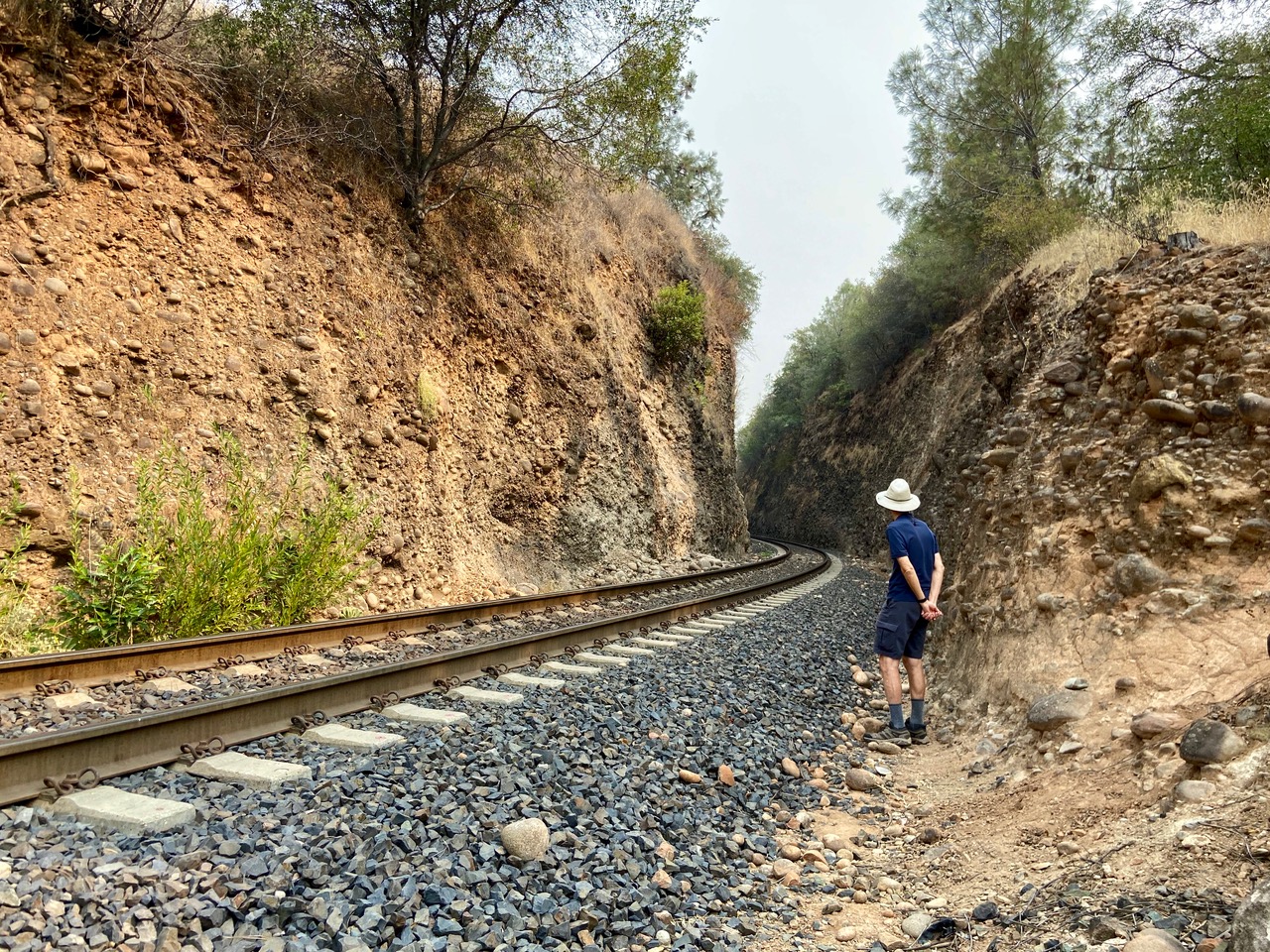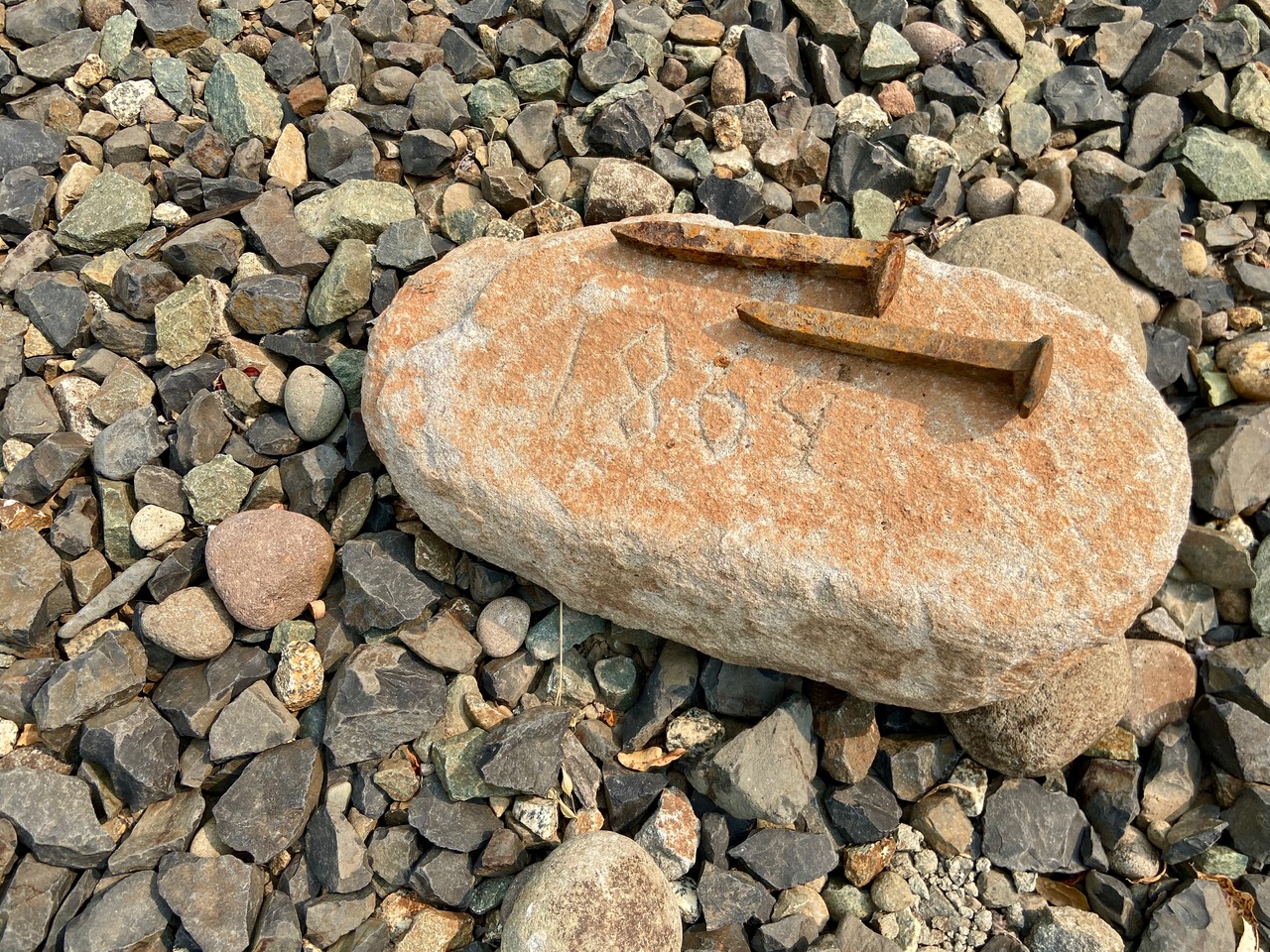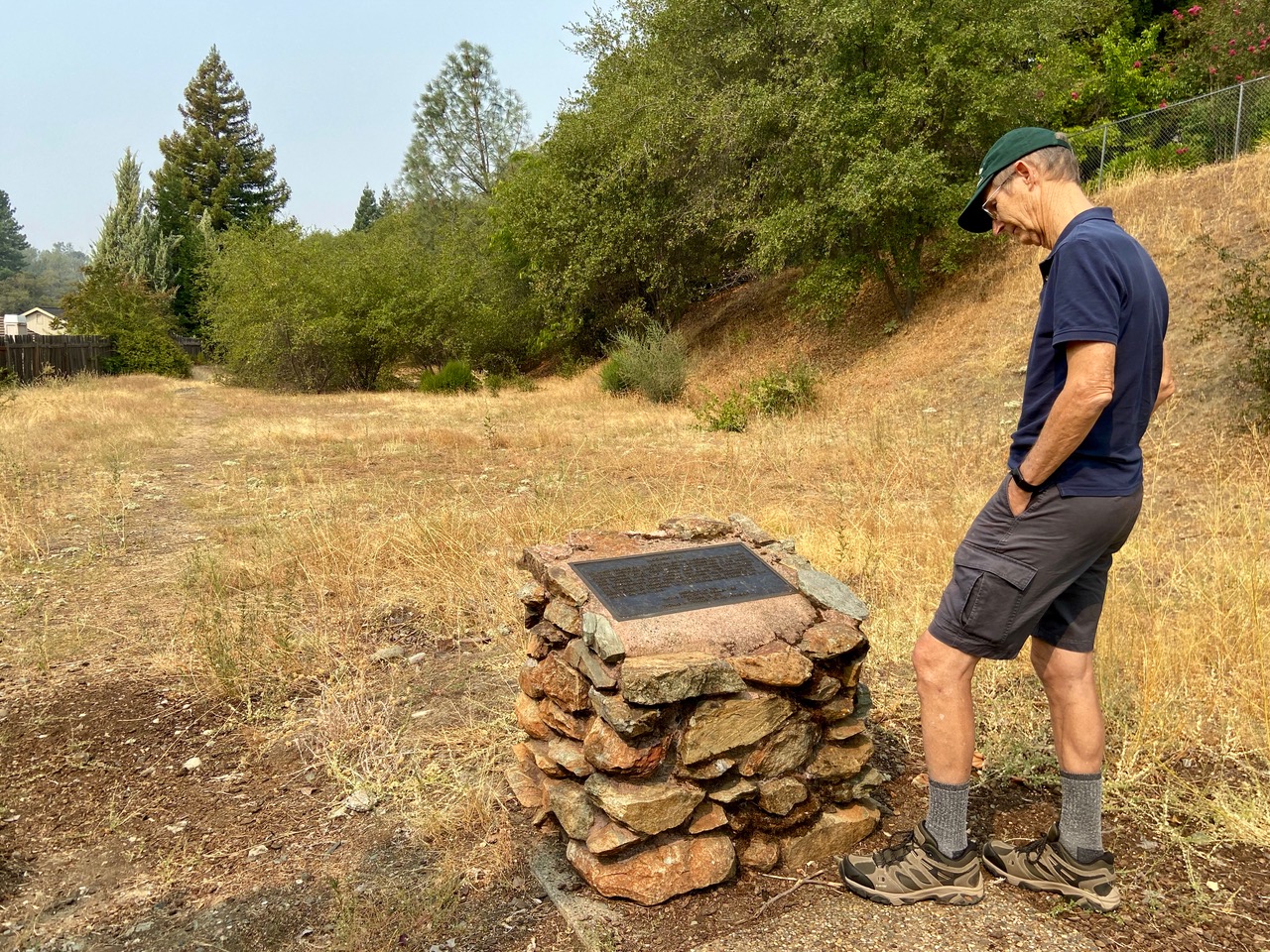Bloomers Cut in Auburn: A Hidden Historic Gem
Contributed by Keli Gwyn
Ribbons of rails stretching across the landscape are a riveting sight. Tracks traversing a narrow pass flanked by 63-foot high walls are even more captivating. Such is the inspiring sight that will greet you at Bloomers Cut in Auburn.
Tucked away in a suburban neighborhood, Bloomers Cut is easy to reach. From Highway 80 east, take the Maple Road exit and keep straight. Maple will turn into Auburn Folsom Road. Follow it for 1 ¼ miles until you reach Herdal Drive on your right. Travel a short distance down Herdal until it dead ends. Park and locate the historic marker on the other side of the fence.
A short path to your left, just two tenths of a mile, will lead you to the edge of the pass with the track visible below. The trail going down to the railbed is rocky, so wear sturdy shoes and exercise caution.

I recommend starting down the trail to your left. At the bottom, you’ll get great views of the cut as it curves through the pass. As tempted as you might be to walk the rails, it’s not advised since these tracks are in use by westbound trains today. If you’d like to see the east end of the pass, you can climb back up and take the opposite trail down.
When the Central Pacific began construction of the western end of the Transcontinental Railroad, they encountered their first major hurdle at Bloomer Cut. Since the train couldn’t climb the hilly terrain, an 800-foot stretch of rock needed to be cleared.
On February 22, 1864, workmen wielding picks and shovels embarked on the backbreaking task of cutting a passage through the hill. The conglomerate rock proved more difficult to break up than they thought, forcing them to use black powder. Accidents resulted, as was the case in April of that year. One worker was killed, and two others were injured when investigating a charge that hadn’t gone off.

Despite the tragedy, work continued. Many believe it to have been carried out primarily by Chinese workers, but historians debate that fact. There is also controversy surrounding the number of men who were on the job. The Sacramento Union declared, at the time, that 300 were involved in the project, while the local Placer Herald said the number didn’t exceed 40. Whatever the number of workers was, what those men accomplished was quite a feat. Upon completion of the Bloomer Cut, it was regaled as the Eighth Wonder of the World.
As you stand by the tracks marveling the job those men did, you can’t help but notice how narrow the pass is. Bloomers Cut has been allowed less clearance than normal due to the concrete-like walls that have withstood the ravages of time. If you scan the rough rocks as you crunch over them, you might even find an old rusty railroad spike or two. Please leave them for others to discover

I hope you enjoy your visit to Bloomers Cut and your trip back in time. While in Auburn, you could admire the historic buildings downtown. Find out more in my post here.
